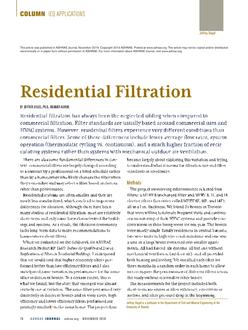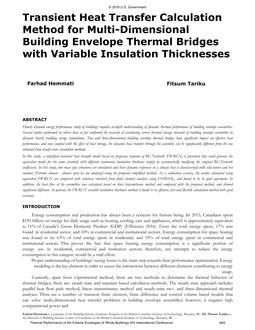In predicting the thermal performance of a wall, one of the most important characteristics to be determined is the steady-state thermal resistance of the wall. For this reason, measurement of thermal resistance was chosen as the starting point for a field investigation of wall, thermal performance.
Heat Flow Meters were installed in the walls of a house to measure heat flow through insulation, and thermocouples were placed on the inside and outside surfaces to measure temperature difference, AT, across insulation. The results were used to determine the resistance of the insulation and the effects of various factors on the accuracy of the measurement of resistance. A calorimeter and an 14FM were installed together in a second house to measure heat flow Q in a similar wall section. These results were used to determine the effects of framing members on overall heat flow and thermal resistance through the wall.
The investigation was carried out in two of four test houses used by the Division of Building Research, National Research Council of Canada (DBR/NRCC),in cooperation with the Housing and Urban Development Association of Canada for studies of energy use in single-family dwellings.
Citation: Symposium, ASHRAE Transactions, Volume 88, Part 1, Houston, TX
Product Details
- Published:
- 1982
- Number of Pages:
- 10
- File Size:
- 1 file , 670 KB
- Product Code(s):
- D-HO-82-03-2


